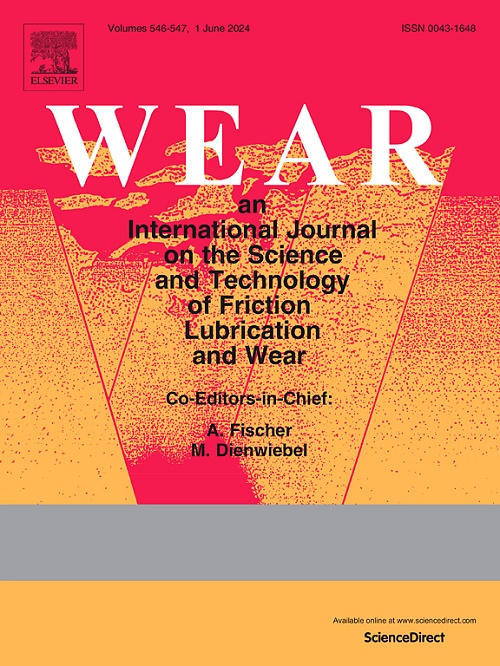Microstructure evolution and damage development in the rails of a single-track railway line after preventive grinding
IF 5.3
1区 工程技术
Q1 ENGINEERING, MECHANICAL
引用次数: 0
Abstract
In sparsely populated areas single-track railway lines are still common. Despite the low-density traffic and low axle loads, rail damage is observed to initiate in the rails of these lines. Not only large cracks requiring repair are found, but also newly initiated, post-grinding damage is observed. Rail specimens from the track containing representative damages are extracted to identify the reasons for the damage initiation in the R260Mn steel rail. At the rail surface, three years after the preventive grinding maintenance, the characteristic grinding facets and roughness patterns are still present. White etching layers are observed to surround the residual grinding grooves, maintaining the roughness as a result of the high wear resistance of these layers. The strain orientation at the gauge side of the rail is uni-directional due to lateral creep in the wheel–rail contact while in the center of the contact surface the strain patterns evidence shear stress reversal associated with the bi-directional traffic. The damage initiation mechanism after preventive grinding is associated with low-wear conditions and stresses concentrated around long-lasting grinding grooves. The findings show that preventive grinding maintenance specifications for regional single-stock railway lines must be improved. Specific points of interest are stringent requirements on the number of facets and surface roughness, as well as directions for the removal of corrugation.
单线铁路钢轨预防性磨削后组织演变及损伤发展
在人口稀少的地区,单轨铁路仍然很普遍。尽管交通密度低,轴载低,但在这些线路的轨道上观察到轨道损坏。不仅发现了需要修复的大裂纹,而且还观察到新产生的磨削后损伤。从含有代表性损伤的轨道中提取钢轨试样,确定R260Mn钢轨损伤起裂的原因。在钢轨表面,经过三年的预防性磨削维护,特征磨削面和粗糙度图案仍然存在。观察到白色的蚀刻层围绕着残留的磨削槽,由于这些层的高耐磨性,保持了粗糙度。由于轮轨接触的横向蠕变,钢轨轨距侧的应变方向是单向的,而在接触面中心,应变模式表明与双向交通相关的剪切应力逆转。预防性磨削后的损伤发生机制与低磨损条件和应力集中在长时间磨削槽周围有关。研究结果表明,区域单线铁路预防性磨削维修规范有待完善。具体的兴趣点是对切面数量和表面粗糙度的严格要求,以及去除波纹的方向。
本文章由计算机程序翻译,如有差异,请以英文原文为准。
求助全文
约1分钟内获得全文
求助全文
来源期刊

Wear
工程技术-材料科学:综合
CiteScore
8.80
自引率
8.00%
发文量
280
审稿时长
47 days
期刊介绍:
Wear journal is dedicated to the advancement of basic and applied knowledge concerning the nature of wear of materials. Broadly, topics of interest range from development of fundamental understanding of the mechanisms of wear to innovative solutions to practical engineering problems. Authors of experimental studies are expected to comment on the repeatability of the data, and whenever possible, conduct multiple measurements under similar testing conditions. Further, Wear embraces the highest standards of professional ethics, and the detection of matching content, either in written or graphical form, from other publications by the current authors or by others, may result in rejection.
 求助内容:
求助内容: 应助结果提醒方式:
应助结果提醒方式:


